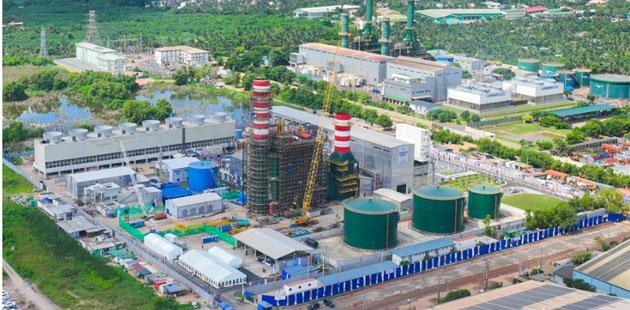03 Sep 2024 - {{hitsCtrl.values.hits}}
 Colombo, September 3 (Daily Mirror)- In the global economy developing, what is triggered is demand for power more and more. The world is starved of resources and has to use its resources sparingly and sustainably to fulfil demands unlimited in human nature. In power generation, the oil and coal-burned era is now heading for an end. The world is heading for more and more clean energy sources, and Sri Lanka is no exception. It has made plans for diversification of its energy mix.
Colombo, September 3 (Daily Mirror)- In the global economy developing, what is triggered is demand for power more and more. The world is starved of resources and has to use its resources sparingly and sustainably to fulfil demands unlimited in human nature. In power generation, the oil and coal-burned era is now heading for an end. The world is heading for more and more clean energy sources, and Sri Lanka is no exception. It has made plans for diversification of its energy mix.
In what appeared to be a major step in its transition to clean energy generation with generation mix diversification, Sri Lanka is now equipped with its LNG (Liquefied Natural Gas) ready and Hydrogen capable power plant.
Sobadhanavi Combined Cycle Power Plant completed its first phase of the power project recently with a net dependable capacity of 220 megawatts to the national grid in the current stage with plans for the increase of it up to 350 megawatts once the next stage is completed by next year, according to Kithsiri Egodawatta, Chief Operations Officer, Lakdhanavi Limited.
“We have already installed a power generation capacity of 220 megawatts. In the next stage, we are ready for the installation of the Steam Turbine and the Boiler. In this case, we recover exhaust or heat generated by the gas turbine for energy/steam generation. It is a Heat Recovery Steam Generator, though we call it a boiler in normal jargon. Steam generated in this manner is conveyed to the steam turbine. Thereby, we intend to generate another 130 megawatts. By February or March, next year, we will be able to complete the second stage of the project, finally realising the total power generation of 350 megawatts,” Engineer Kithsiri said.
Currently, it is operated on diesel. With the infusion of the latest technology, efficiency has been increased, in Sobadhanavi, there will be a significant reduction in generating costs compared to other diesel-operating power plants.
Most importantly, the plant is ready for LNG power generation whenever it is available in the country. Compared with diesel-burned power generation, the cost of LNG is only one-third.
Referring to the current energy mix of Sri Lanka, he said the country almost depends on 50-55 per cent on renewables including major hydros and the rest on thermal power, of which the majority comes from coal. The remaining is from diesel and furnace oil.
“LNG is nothing but a transition fuel in the evolution process from thermal power to clean energy. LNG is cost-effective and environmentally friendly. Hydrogen is the next step. When hydrogen is burnt, you get water only. Then it is even more environment-friendly. Our machine is capable of using hydrogen to a certain extent,” he said.
The addition of 350 megawatts will stabilise the national power grid. The plant is located in the Western Province, where energy consumption is the highest.
“Then, it will reduce the transmission cost. The plant is located where consumption is. So, it involves less transmission cost,” he said.
Improving the transmission system is one of the key aspects of reducing transmission losses and will result in reducing the cost in this regard.
15 Nov 2024 39 minute ago
15 Nov 2024 54 minute ago
15 Nov 2024 58 minute ago
15 Nov 2024 1 hours ago
15 Nov 2024 1 hours ago